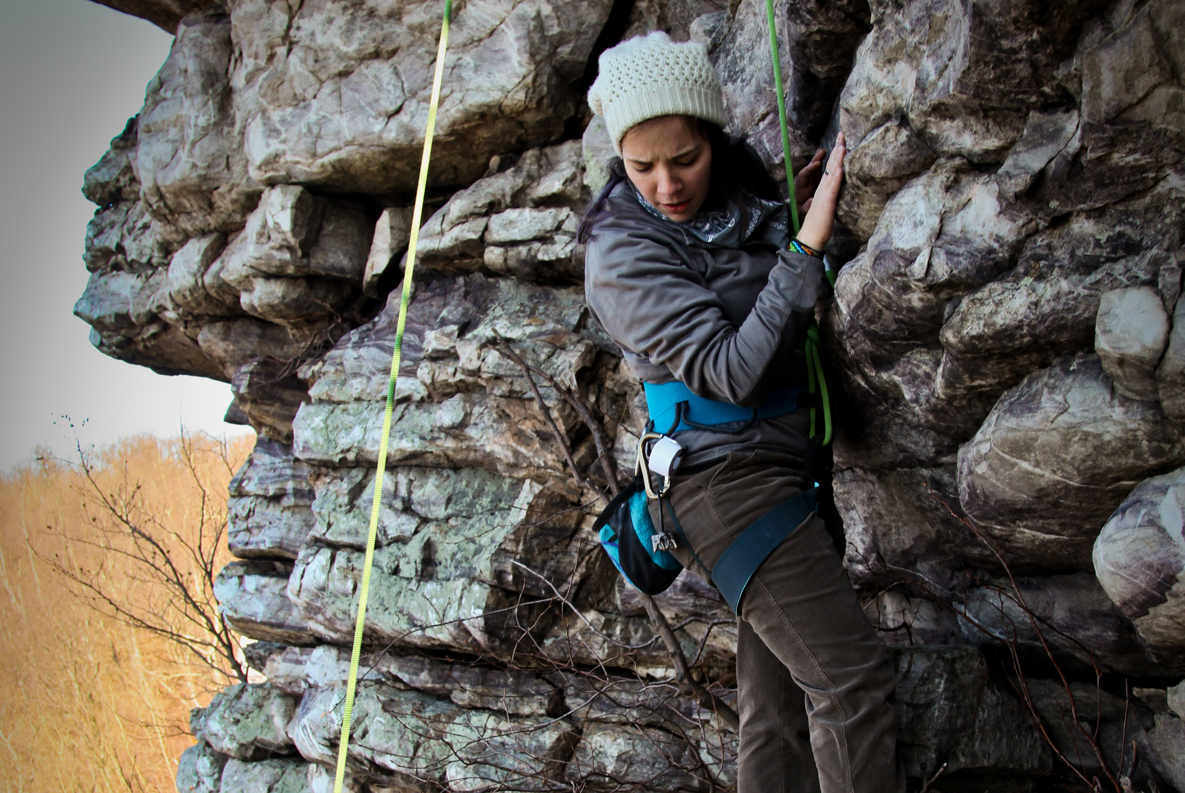Use this guide as an introduction to climbing communication techniques. Remember, learning about rock climbing online serves as a tool, but in no way are written articles a substitute for hands-on instruction. Failure to follow appropriate safety measures could result in serious injury or death. If just getting started, seek professional climbing courses offered by AMGA-certified guiding services. Be smart, and climb safe.
Introduction to Rock Climbing Communication
Good communication is the foundation of all climbing. This is especially important on multi-pitch climbs. Before you ever leave the ground, you and your partner need to run through the scenarios that you’re likely to encounter on the wall.

Above is a typical pitch’s worth of communication. We’ll say Jason is leading, and Sara is belaying (assume they’ve established that they are both tied in, haven’t forgotten anything, checked one another, etc.).
You need to determine and agree upon commands, and stay consistent.
Also, stay specific. Many times there are more climbing parties in the vicinity and it can be hard to distinguish voices once you are up on the wall.
Use your partner’s name after each command. And be loud!
This is especially important for girls. It’s nothing against you, ladies, but your pretty voices just don’t carry as well, so make an extra effort to be sure you’re heard.
Confirm with one another.
You can either echo back what your partner said, or just yell some affirmative response.
The more you climb with someone, the smoother the communication will be. But if you’re climbing with a new partner, be sure to establish all this before you are six pitches up, out of sight from one another, yelling in different languages.
Don’t forget to relay important information to one another.
It is sometimes good for the belayer to tell the leader when they’ve reached half-rope (especially when anchors are not fixed, or the climb is wandering). If you’re belaying and there is something that your leader needs to know, tell them, even if they are hyper-focused and you don’t want to disturb them. It’s surprisingly easy to climb straight past anchors and not notice, only to find yourself off route and in trouble. There is nothing more maddening than going through an ordeal like that, only to bring your second up and have them tell you that they didn’t say anything because they thought you were linking pitches.
Give each other updates on how you’re doing.
Don’t wait for your partner to ask if you are exhausted; tell them you’re running out of energy before you get to that point. Leave your pride on the ground.
And lastly, remain polite.
Attentiveness while belaying
Belayers, you need to be attentive. A lot of the yelling could be cut down if you just watch your climber closely. A smooth team that knows each other is usually pretty quiet. Ideally, the leader shouldn’t have to yell that they are clipping, or that they need to be watched (they should be watched at all times).
Non-communication is also key
Keep to the essentials. Don’t waste time chatting about unimportant things at the belays. You can talk about how cool a move was, or your dog, on the hike out or back in the car. Stay focused.
Alternate communication methods
It is common to be on a climb where visual contact is not possible once the leader starts. Wind, rivers, or cars down below can also make it hard to hear one another. In these situations, normal forms of communication don’t work any more, and you and your partner need to figure something else out. Again, it’s best to figure out how you’ll communicate before you leave the ground. If you know that you and your partner will be out of sight and out of earshot, develop and agree upon a way to communicate.
Verbal contact is the most effective, so yell as loud as you can a few times before resorting to an alternate method. If you are near a dihedral feature, or near a wall that is perpendicular to your route, you can try yelling towards it rather than yelling up toward your partner. This way you can bounce your voice around whatever is between you and them.
Communication by rope pulls
Rope pulls are effectively a simplified Morse code between you and your partner. Because of rope drag, these pulls need to be strong and deliberate. Due to the possibility of easily miscommunicating, however, we recommend seeking advice from an expert before implementing this technique.
Another way to communicate is with the use of two-way radios. This might be a better option when a lot of information has to be shared, since the rope-pull technique can obviously only convey very simple commands.
Free eBook: 7 Mistakes to Avoid as a New Climber
Basic rock climbing commands
- Belay on – confirmation from the belayer that the climber is on belay
- Slack – climber requesting slack from the belayer
- Take – climber requesting the belayer to “take in” any slack
- On you – climber asking for enough tension to hang
- On me – climber asking for slack to begin climbing again (no longer hanging)
- Watch me – climber requesting the belayer to maintain close attention; climber may be about to fall
- Rock – always yell if a falling rock is seen
- Rope – always yell if a rope is being dropped from above or pulled through the anchors
- Lower – climber tells the belayer he or she is ready to be lowered
- Lowering – confirmation by the belayer as he or she begins to lower the climber
- Off belay – climber requesting to be taken off belay once he or she is securely attached to a -redundant anchor
- Belay off – confirmation that the climber has been taken off belay








